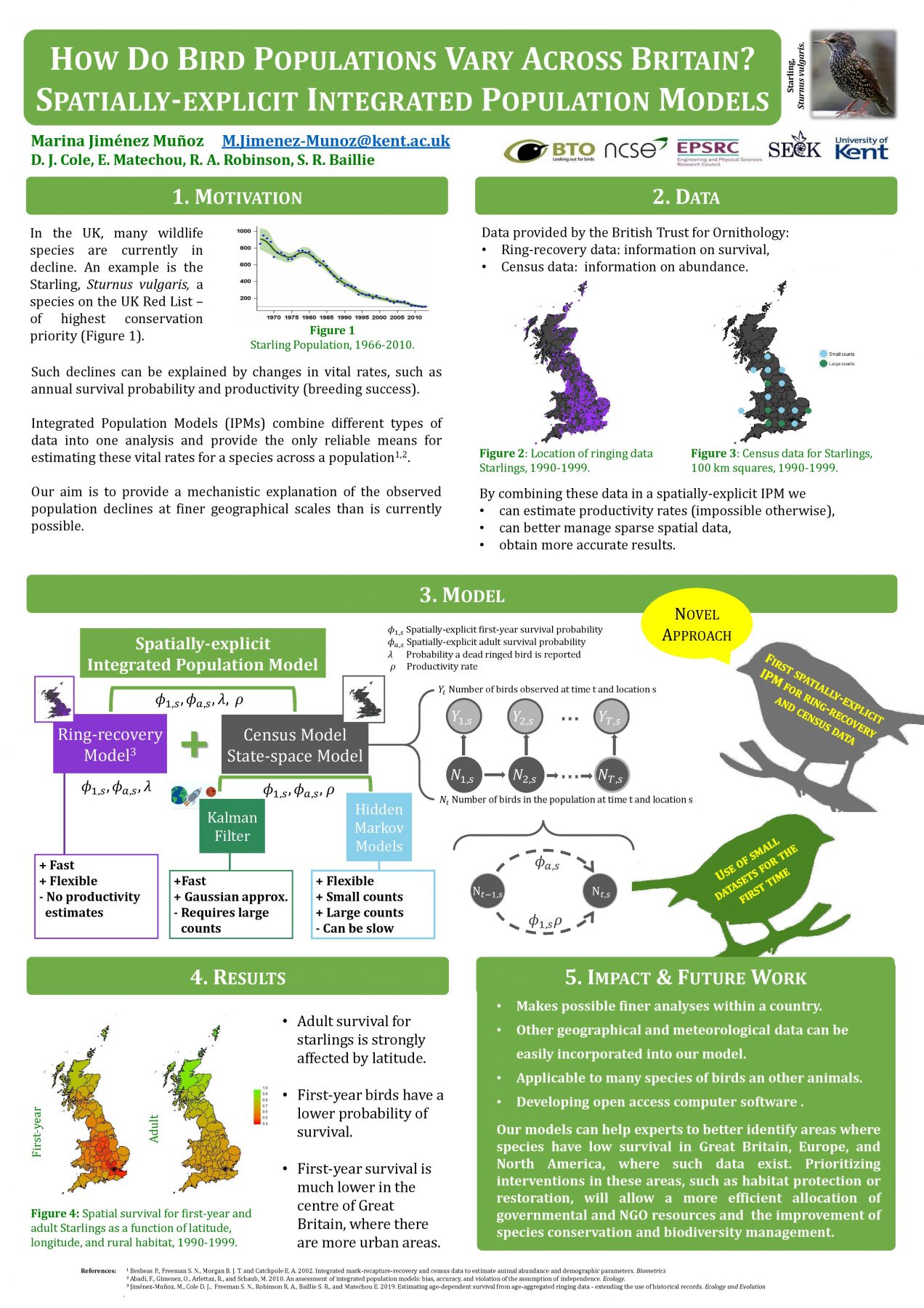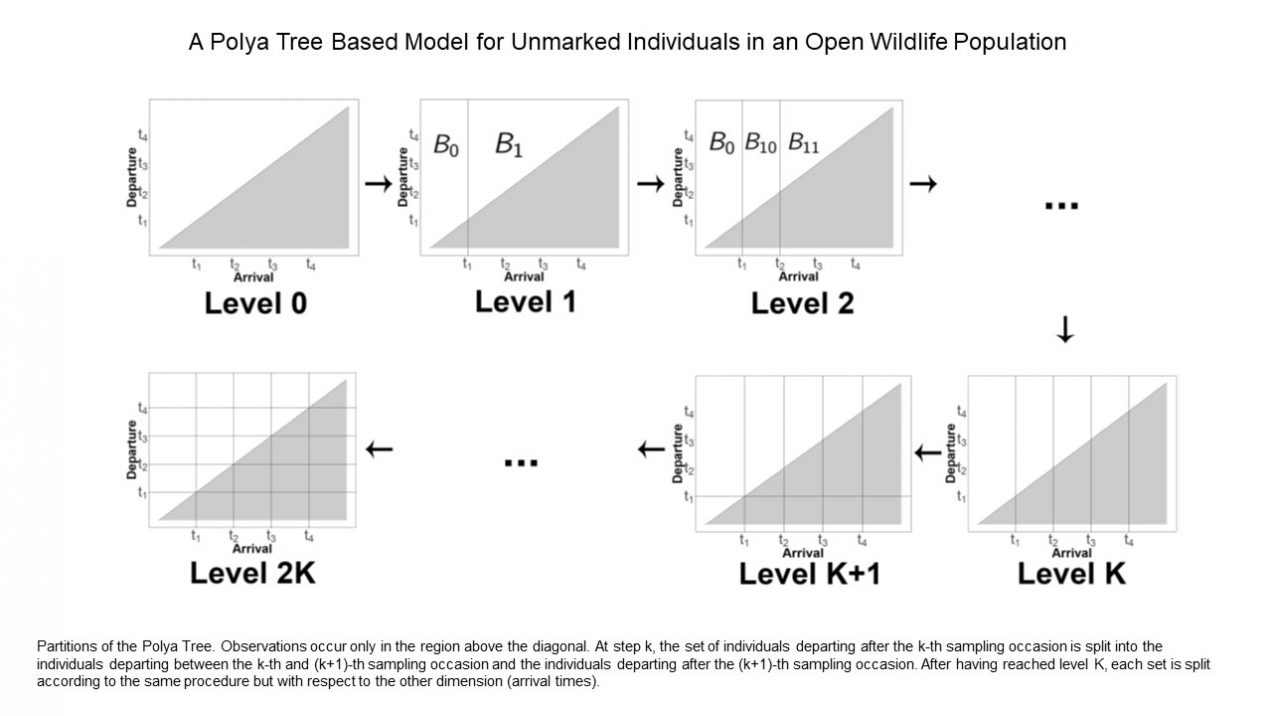Congratulations to Marina who has been selected to display her poster at the House of Commons on Wednesday 13th March in the Mathematical Sciences Session.
Well done Marina!

Congratulations to Marina who has been selected to display her poster at the House of Commons on Wednesday 13th March in the Mathematical Sciences Session.
Well done Marina!
Congratulations to Marina who has been selected to present her research at parliament in the STEM for Britain 2019 competition. How do bird population vary across Britain? Spatially-Explicit Integrated Population Models.

The paper, titled “A Polya Tree based model for unmarked individuals in an open wildlife population”, has been accepted for the conference “Bayesian Statistics: New Challenges and New Generations – BAYSM 2018”.
This is Alex’s first paper, well done Alex!
The paper Estimating age‐dependent survival from age‐aggregated ringing data—extending the use of historical records, by Marina, Diana, Stephen Freeman (Centre for Ecology and Hydrology), Rob Robinson (BTO), Stephen Baillie (BTO) and Eleni, has been published in Ecology and Evolution.
Abstract:
Bird ring‐recovery data have been widely used to estimate demographic parameters such as survival probabilities since the mid‐20th century. However, while the total number of birds ringed each year is usually known, historical information on age at ringing is often not available. A standard ring‐recovery model, for which information on age at ringing is required, cannot be used when historical data are incomplete. We develop a new model to estimate age‐dependent survival probabilities from such historical data when age at ringing is not recorded; we call this the historical data model. This new model provides an extension to the model of Robinson, 2010, Ibis, 152, 651–795 by estimating the proportion of the ringed birds marked as juveniles as an additional parameter. We conduct a simulation study to examine the performance of the historical data model and compare it with other models including the standard and conditional ring‐recovery models. Simulation studies show that the approach of Robinson, 2010, Ibis, 152, 651–795 can cause bias in parameter estimates. In contrast, the historical data model yields similar parameter estimates to the standard model. Parameter redundancy results show that the newly developed historical data model is comparable to the standard ring‐recovery model, in terms of which parameters can be estimated, and has fewer identifiability issues than the conditional model. We illustrate the new proposed model using Blackbird and Sandwich Tern data. The new historical data model allows us to make full use of historical data and estimate the same parameters as the standard model with incomplete data, and in doing so, detect potential changes in demographic parameters further back in time.